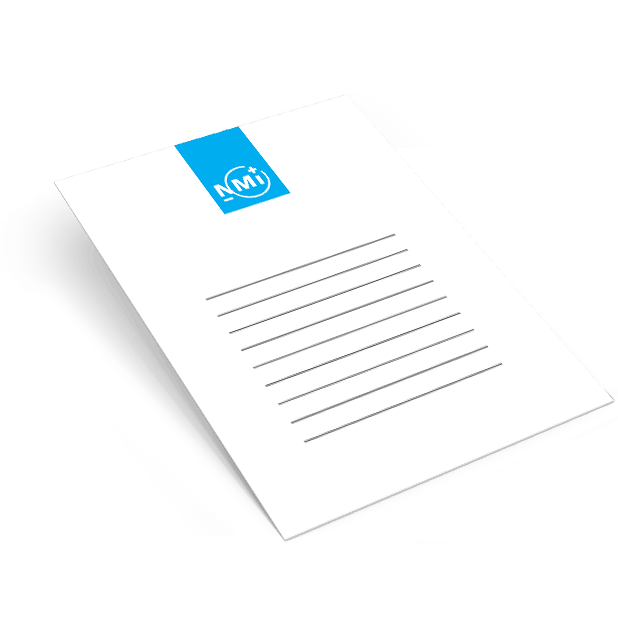
15 Aug Hydrogen Dispensers: a Guide to Calibration and Certification
Hydrogen Dispensers: a Guide to Calibration and Certification
15 August 2022
Delft, The Netherlands — 15 August 2022. Hydrogen fuel cell electric vehicles (FCEVs) are an increasingly popular alternative to standard EVs, especially as more European countries plan to boost their production of green hydrogen. But how do we ensure the infrastructure supporting the adoption of FCEVs meets equipment reliability and measurement standards?
With its drive to net-zero carbon emissions by 2050, the Dutch government has paved the way for hydrogen fuel cell vehicle growth with funding that aims to increase and strengthen essential infrastructure. As of July 2022, the Netherlands has 15 hydrogen stations open, with more under construction or awaiting permits and funding for additional stations being made available to hit the national target of 50 by 2025. The Dutch government hopes this will spur financial investment and interest in hydrogen fuel cell technology, driving more innovation and increased sales of FCEVs.
However, the Netherlands is not the only EU country seeing growth in FCEVs and constructing additional hydrogen fueling stations. FCEV markets in Belgium, Germany, and the UK have also experienced growth, while other European countries increasingly adopt green hydrogen strategies spanning multiple sectors and industries.
Growing interest in this technology places new responsibilities on notifying bodies to help ensure the safe design and construction of hydrogen stations. The NMi certification program for hydrogen refuelling stations helps advance adoption and elevates the accuracy and consistency of hydrogen fuel cell technology.
Hydrogen stations differ from traditional filling stations
An established hydrogen fuel distribution and sale framework are necessary to encourage increased acceptance and commercial use of FCEVs.
While certification of dispensers has long been common practice for conventional fuels such as diesel, gasoline, and even alternative gas fuels like CNG or LNG, certifying hydrogen dispensers is a brand-new discipline.
This is not only because of the novelty of FCEVs, but also because hydrogen dispensers contain some significant differences compared to traditional filling stations.
- Hydrogen gas is stored at 700 bar (for passenger cars) or 350 bar (for larger vehicles), which is much higher than regular fuel dispensers
- Fuel is measured by mass, i.e., by kilograms rather than litres.
- Hydrogen dispensers have a unique fuel nozzle
- Dispensers are pressure ramp rate-controlled to keep fuelling safe, as outlined in the SAE J2601
- Hydrogen gas supply comes from a tanker trailer or on-site electrolyser power by solar or wind energy
New dispensers require verification
Currently, most active hydrogen dispensers have not been tested for metrological accuracy. As a result, measurements can vary significantly, negatively affecting both station owners and FCEV drivers.
The reason dispensers have not been tested is the lack of accurate and traceable reference installations — that is, tanks on a weighing scale that measure the amount of dispensed hydrogen. Several reference installations have been developed in the EU-funded MetroHyve project, which was established to address the absence of measurement methods and standards.
NMi works with the reference installation developed by VSL, the Dutch Metrology Institute. As the only body designated under the Dutch Metrology Act to certify hydrogen filling stations, NMi combines its expertise in testing fuel dispensers with VSL’s innovative Hydrogen Quantity Standard (HyOS). This installation makes it possible to measure the quantities of hydrogen in a traceable way.
Together with H2Platform (a partnership of 40 companies involved in hydrogen) and other industry stakeholders, NMi is also developing a certification programme that will guarantee a level of consistency in testing and help customers more easily demonstrate compliance.
NMi standards for hydrogen refuelling stations
NMi serves as a one-stop shop for the testing and certification of hydrogen dispensers. We offer a comprehensive service from lab to site, conducting type approvals for individual components in addition to an entire system approval once the dispensers have been assembled and put in position.
Using the VSL reference installation, it’s possible to check the amount of dispensed hydrogen against the appropriate legislation — the “Regeling Nationaal Autonoom Geregelde Metering Instruments” in the Netherlands, which uses the OIML R139 document as its basis — to ensure compliance. As well as sticking to a maximum permissible error (MPE) percentage of 2%, NMi ensures further accuracy by testing if components are influenced by external factors (like EMC). As a customer-oriented service provider, NMi is ready to assist if any non-conformities are found on site.
NMi strongly recommends customers take a vigilant approach when selecting components — ideally getting them checked before assembly — to avoid any issues at the system approval stage and thereby save time.
Contact us or visit the Hydrogen Refueling page to learn more about NMi calibration and certification services for hydrogen dispensers.




